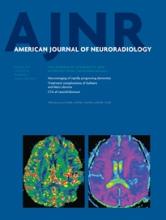Research ArticleNeurointervention
Open Access
Mind the Gap: Impact of Computational Fluid Dynamics Solution Strategy on Prediction of Intracranial Aneurysm Hemodynamics and Rupture Status Indicators
K. Valen-Sendstad and D.A. Steinman
American Journal of Neuroradiology March 2014, 35 (3) 536-543; DOI: https://doi.org/10.3174/ajnr.A3793
K. Valen-Sendstad
aFrom the Biomedical Simulation Lab (K.V.-S., D.A.S.), Department of Mechanical and Industrial Engineering, University of Toronto, Toronto, Canada
bCenter for Biomedical Computing (K.V.-S.), Simula Research Laboratory, Lysaker, Norway.
D.A. Steinman
aFrom the Biomedical Simulation Lab (K.V.-S., D.A.S.), Department of Mechanical and Industrial Engineering, University of Toronto, Toronto, Canada

Submit a Response to This Article
Jump to comment:
No eLetters have been published for this article.
In this issue
American Journal of Neuroradiology
Vol. 35, Issue 3
1 Mar 2014
Advertisement
K. Valen-Sendstad, D.A. Steinman
Mind the Gap: Impact of Computational Fluid Dynamics Solution Strategy on Prediction of Intracranial Aneurysm Hemodynamics and Rupture Status Indicators
American Journal of Neuroradiology Mar 2014, 35 (3) 536-543; DOI: 10.3174/ajnr.A3793
Jump to section
Related Articles
Cited By...
- Youre so vein, you probably think this models about you: opportunities and challenges for computational fluid dynamics in cerebral venous disease
- 4D-CT angiography versus 3D-rotational angiography as the imaging modality for computational fluid dynamics of cerebral aneurysms
- Towards the Clinical utility of CFD for assessment of intracranial aneurysm rupture - a systematic review and novel parameter-ranking tool
- Critical role of angiographic acquisition modality and reconstruction on morphometric and haemodynamic analysis of intracranial aneurysms
- Aneurysmal Parent Artery-Specific Inflow Conditions for Complete and Incomplete Circle of Willis Configurations
- Better Than Nothing: A Rational Approach for Minimizing the Impact of Outflow Strategy on Cerebrovascular Simulations
- Republished: Spontaneous thrombosis of a basilar tip aneurysm after ventriculoperitoneal shunting
- Hemodynamic Differences in Intracranial Aneurysms before and after Rupture
- Additional Value of Intra-Aneurysmal Hemodynamics in Discriminating Ruptured versus Unruptured Intracranial Aneurysms
- Spontaneous thrombosis of a basilar tip aneurysm after ventriculoperitoneal shunting
- Narrowing the Expertise Gap for Predicting Intracranial Aneurysm Hemodynamics: Impact of Solver Numerics versus Mesh and Time-Step Resolution
- Artery Length Sensitivity in Patient-Specific Cerebral Aneurysm Simulations
- The Computational Fluid Dynamics Rupture Challenge 2013--Phase I: Prediction of Rupture Status in Intracranial Aneurysms
- MR Imaging of Myeloperoxidase Activity in a Model of the Inflamed Aneurysm Wall
- Effects of Circle of Willis Anatomic Variations on Angiographic and Clinical Outcomes of Coiled Anterior Communicating Artery Aneurysms
- Resolving the Issue of Resolution
This article has not yet been cited by articles in journals that are participating in Crossref Cited-by Linking.
More in this TOC Section
Similar Articles
Advertisement











